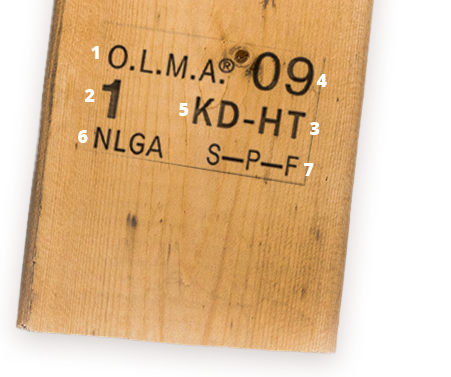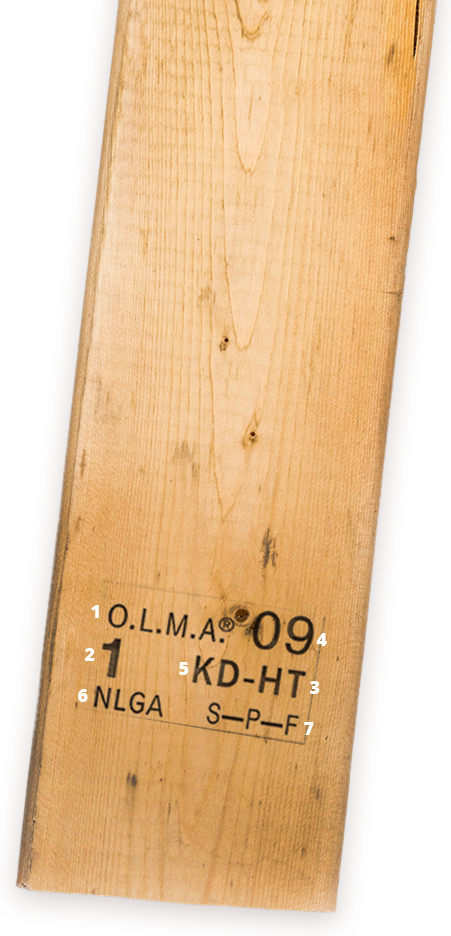Lumber Grading
What is Lumber Grading?
When lumber is used as a structural material in construction, it has to perform properly. It must be strong enough, stiff enough, dry enough, etc; to meet the required performance levels.
In Canada, a sophisticated system of product standards, engineering design guidelines, government regulations, education, reviews, and check and balances has evolved over the years to help people determine what lumber they need for a specific building project, and what grade of lumber they are receiving.
Since 1960, virtually all of the lumber produced in Canada has been marked with a nationally standardized, easy-to-read Lumber Grade Stamp placed right on the wood itself. These stamps identify the species, grade and moisture content of the piece of lumber, its facility of origin, the logo of the accredited Grading Agency that has overseen its grading, and any special processing the lumber has received. Grade stamps and certificates are the basis of sale, purchase, and regulatory acceptance of the lumber manufactured in Canada.

How to Read a
Lumber Grading Stamp
1. ACCREDITED GRADING AGENCY LOGO CERTIFICATION TRADEMARK
This trademark certifies the legitimacy and accredidation of the wood product.
2. LUMBER GRADE
Common grades of visually graded lumber include:
-SEL STR (Select Structural)
-No. 1, No. 2
-No. 3 / Stud / Stand & Btr. (or Standard & Better)
(May just have the grade number alone)
3. PHYTOSANITARY TREATMENT
These may include:
-HT (Heat Treated to the international standards for core temperature and length of time sufficient to kill a series of pests.
This is often combined Kiln Drying of lumber, to produce a stamp reading KD-HT
(May just have the grade number alone)
4. FACILITY IDENTIFICATION
Firm name, brand, or mill number. This allows lumber to be traced back to the place of origin.
5. SEASONING OR MOISTURE CONTENT
Common grades of visually graded lumber include:
-SEL STR (Select Structural)
-Mc – (number) (Percentage moisture content. MC-15, for example, means the lumber had a maximum moisture content of 15% when it was produced).
-KD (Kiln Dried to a maximum moisture content of 19%. This may also include a lesser moisture content number such as KD-15).
-S-Dry (19% maximum moisture content at time of surfacing).
-S-GRN (more than 19% maximum moisture content, or unseasoned).
(May just have the grade number alone)
6. GRADE RULE
When lumber is graded to the National Lumber Grading Authority rules, the stamp will include NLGA.
7. WOOD SPECIES OR SPECIES COMBINATION
Common designation are:
-S-P-F (or Spruce – Pine – Fir)
-Hem-Fir (N) (or Hemlock – Fir)
-D. Fir-L (N) ( or Douglas Fir – Larch)
-N. Species (include red cedar, certain pines, balsam and poplars)
Note: The Canadian and U.S. versions may have a different mix of species, with different structural rating. The U.S. species groups are identified with an “S”, and the Canadian with an ”N”.

